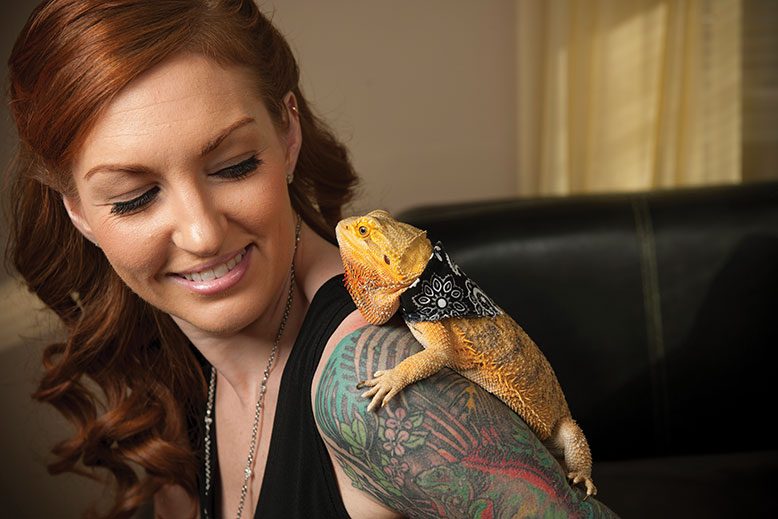
It’s time for Kerri Joyce to feed her pet. Tongs in hand, she picks through a small plastic container alive with squirming bugs. It’s a virtual smorgasbord for her scaly friend, a bearded dragon named Cinder. Carefully, Joyce drops an insect in front of Cinder on the living room floor. Cinder stares at his prey momentarily, then pulls it into his mouth with a flick of his tongue.
Joyce has been obsessed with reptiles, especially bearded dragons—or beardies—since 2006, when she started working for Snakes N Scales, a Wanaque-based organization offering educational shows for kids.
Over the years, Joyce has turned her Bloomfield Cape Cod into a reptile wonderland currently populated by two uromastyx lizards (known for their spiny tails), three snakes and three beardies. Each has its own tank. When Joyce is home, she lets her beardies—Rocky, Cinder and Cash—explore. “I’ll have one on the couch and one on the floor running around, but I keep them separated because they fight,” says Joyce. “Cinder is a snuggler, so he’ll spend lots of time climbing on me.”
Each morning, Joyce blends collard greens, turnips, swiss chard, butternut squash and arugula in a food processor for her cold-blooded friends. Three times a week, she treats them to cockroaches and superworms. She keeps the insects plump on a weekly vegetable diet.
Beardies are native to Australia and require temperatures between 95 and 100 degrees. UVB lights and ceramic heat emitters keep the tanks warm. During the day, Joyce, an equity trader for a Manhattan hedge fund, checks in on her scaly pals via webcam. When the weather is warm, Joyce outfits the beardies with harnesses and leashes and takes them outdoors for some Jersey air.
Joyce gained much of her knowledge of reptile care from her part-time job at Snakes N Scales. “When I do a show and parents say, ‘My son wants a lizard, what should I get?’ I always say bearded dragons,” says Joyce. “They are the best reptile pet. People don’t expect beardies to be loving.”
Joyce’s reptiles are all exotics, meaning nongame species not indigenous to New Jersey, according to the state Department of Environmental Protection’s Division of Fish and Wildlife. All exotic pets require a permit in New Jersey except those on the exempted list, which includes peacocks, snapping turtles and boa constrictors. In 2017, the department issued 4,994 hobby permits for exotic species.
Owning exotic pets is not for everyone. “A lot of exotics have very specific environmental needs, and an owner has to replicate their habitat for them to have a good quality of life,” says Dr. Frank Boren, a veterinarian specializing in exotics at Oradell Animal Hospital. Social, dietary and health needs also should be considered.
So why go exotic? “A lot of people are attracted to exotics because they’re unique,” says Boren, the longtime vet at Bergen County’s Van Saun Park Zoo. “Most people like having nature around them.” Exotics also have a practical side. Reptiles, for example, provide an alternative for animals lovers with allergies. Most exotic animals don’t need to be walked, and some, such as snakes, require minimal interaction.
Boren advises to look before you leap for a lizard or other exotic. “People need to be intelligent consumers and do a lot of homework,” he says.
Photos by Jauhien Sasnou
Karen Demeter is one lover of exotic pets who does her research. “Before I take any animal in,” she says, “I like to get some basic information online about the care, the life span, the food, and where to take it if it gets sick or hurt. Then I’ll go and find people who have those types of animals and get more real-life information.”
These days, Demeter keeps 12 guinea pigs, three chinchillas, two ferrets, snakes, chameleons, cats, dogs, and a sugar glider, a small, nocturnal marsupial. She also has horses, pigs and roosters on her North Hanover Township farm. “I like the uniqueness of their care, needs and behaviors,” says Demeter of her various pets. “I enjoy having unusual critters.”
She doesn’t do it alone. Each week, Demeter, a teacher in Mercer County Special Services school district, brings eight of her guinea pigs to school for students in various classrooms to care for. (The guinea pigs come home on weekends.) At home, her three daughters pitch in with pet care.
Demeter puts up baby gates around the house, giving every group of animals a designated area. The snakes live in a rack system, similar to a chest of drawers. The chameleons require upright, screened enclosures with branches and foliage for climbing. The guinea pigs are housed in small, wire cages that Demeter stacks on moveable stands.
The chinchillas are especially active and require the most space. The 6-to 8-inch-long nocturnal rodents like to run on exercise wheels and bounce from side to side in their cages. “They remind me of Tigger,” says Demeter. Weighing in at 2-to-3 pounds and looking like little fur balls, chinchillas eat hay and a pellet formula. Dental care is important for chinchillas, who like to chew on wood and pumice blocks. Vets can check for overgrown teeth and alignment issues.
Demeter first started fostering cats and dogs in 2010. Eventually, she rescued some chinchillas from Pet Rescue of Mercer and, most recently, took in a sugar glider from a friend. She also enjoys educating people about animals, a skill she uses at her part-time job at PetSmart.
“A lot of people feel that cleaning up after an animal or having to feed it everyday is very time consuming and impractical,” says Demeter. “I enjoy that.”
Photos by Jauhien Sasnou
Gina Ciconte has always gravitated toward animals for comfort. “When something happened in my life, animals always gave me some kind of therapy,” she says. Thanks to her two parrots, Tiki, a Timneh African grey, and Bunchy, a caique, therapy is also entertaining.
Bunchy can impersonate Ciconte’s laugh. Tiki chats during feeding time, repeating phrases such as, “Yummy,” “Ya hungry?” and “Tiki is a good boy.”
The two birds, both purchased from Fancy Feathers in Blackwood, have different temperaments. Bunchy likes to be around people; Tiki only likes to interact with Ciconte.
“I think a lot of people get parrots because they think, Oh they’re neat, they’re going to talk,” says Ciconte. “But they need a lot of attention and stimulation.”
Ciconte keeps the birds’ cages open during the day. Their wings are clipped so they can only hop, walk or flutter around her house. She feeds them seeds, produce and grains, such as pasta or brown rice, and shares her popcorn while watching television.
Ciconte also keeps an emu, pigs, goats and seven peacocks, among other animals, on her 70-acre farm in Mullica Hill. She and her husband, Bob, plan to turn their property into a nonprofit therapy farm, called Safe Haven, to share their love of animals.
Ciconte is constantly learning more about caring for animals, but her sense of responsibility never changes. “These parrots, they can live 40, 50, 60 years,” she says. “You don’t get pets because you’re fascinated. You get them because you want to give them the best life possible.”
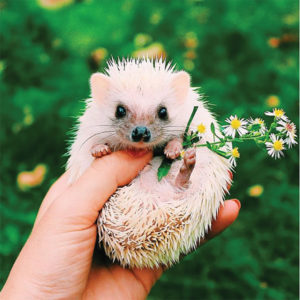
Megh Valentine posts photos of her three hedgehogs— Chickpea, Rosemary and Olive (pictured)— on their Instagram account. Courtesy of Megh Valentine
Megh Valentine remembers sitting in class her senior year of high school, looking at Instagram photos of hedgehogs. Now, she’s part of the hedgehog social-media community. She shares pix of her hedgies, Chickpea, Rosemary and Olive, dressing them in accessories meant for stuffed animals or dolls. Her pets have 14,000 Instagram followers—@hedgiegram. “The pictures are a fragment of what they’re like,” says Valentine, a Dumont resident. “The rest of the time they’re going crazy and flinging their bodies all around.”
Valentine’s spiny mammals are about the size of a softball and eat cat food and mealworms. Each has its own cage equipped with a mini tent made of fleece and felt and designed by Valentine. The tents block out light—hedgehogs are nocturnal—and provide warmth. At night, the hedgehogs run on exercise wheels in their cages.
Valentine tries to hold her pets every day for about 30 minutes. “Sometimes people will be afraid of quills and they’ll use gloves,” says Valentine. “It’s a good idea to get them used to your bare hands.”
Valentine, a freelance photographer and graphic designer, has photographed her hedgehogs with products for brands such as Forever 21 and Urban Outfitters Europe.
But the hedgehogs aren’t always ready for their closeups. Their moods vary. Chickpea is cuddly, “almost like a lap dog,” says Valentine. But Olive and Rosemary are younger and more defensive. “Sometimes they are grumpy,” she says. “But then the next day you go to them, and you know they just needed space. You know that they love you.”




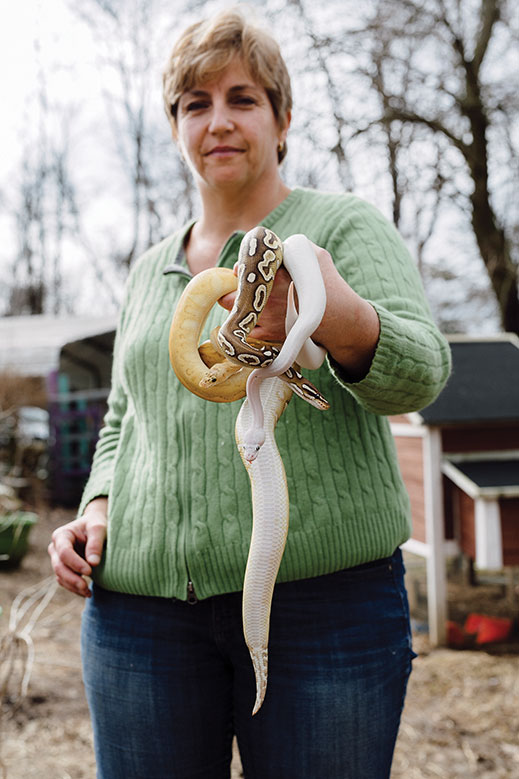
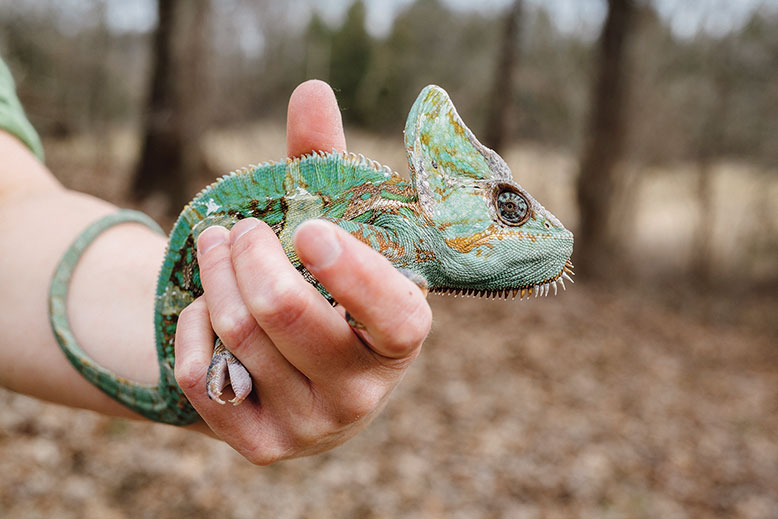
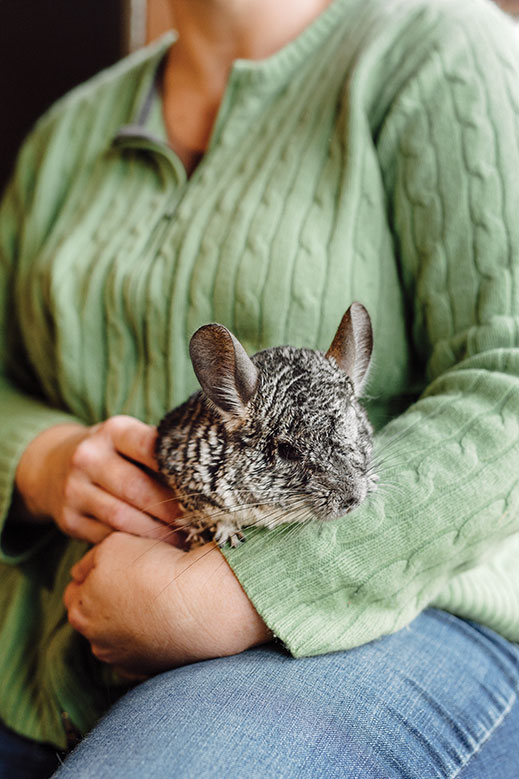

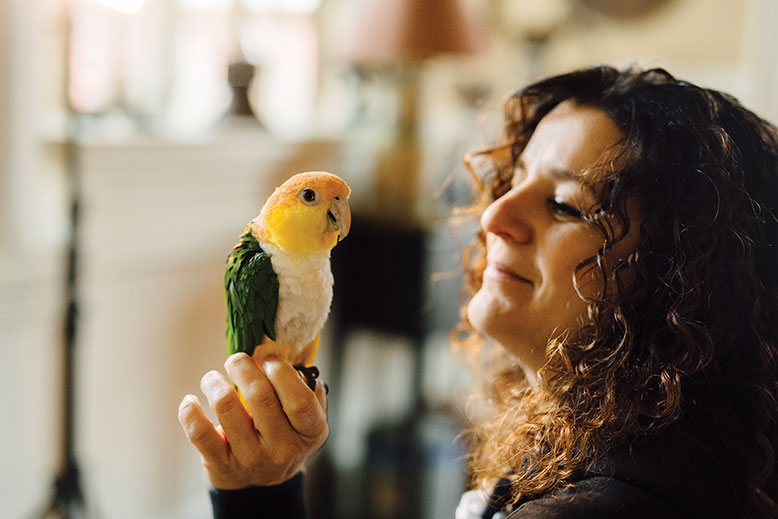
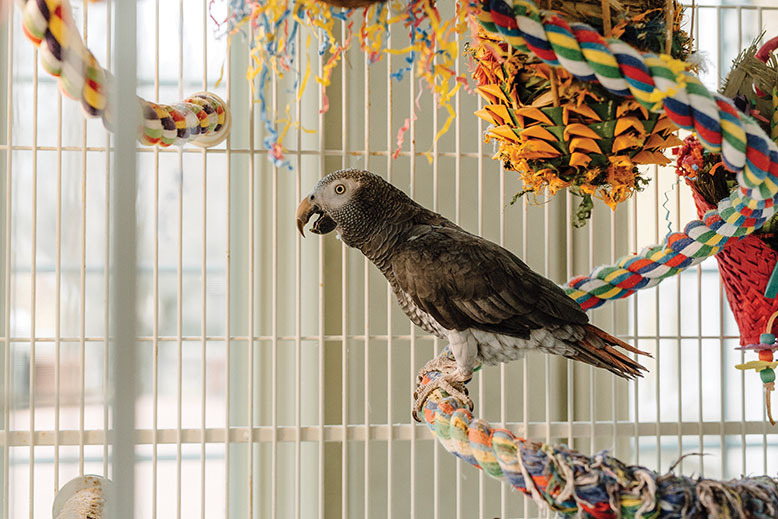
If Demeter researches before purchasing an exotic pet then why did she buy a single sugar glider when they get really depressed without a buddy? most certified breeders don’t even sell individual sugar gliders because they’re a lot more likely to get depressed and self harm
Thank you for this article showcasing how awesome exotic animals are!
They are very underrated pets and deserve more media
attention. My two guinea pigs give me so much joy! Visit us on Instagram
@furry_shenanigans for some #jerseypigs adventures!